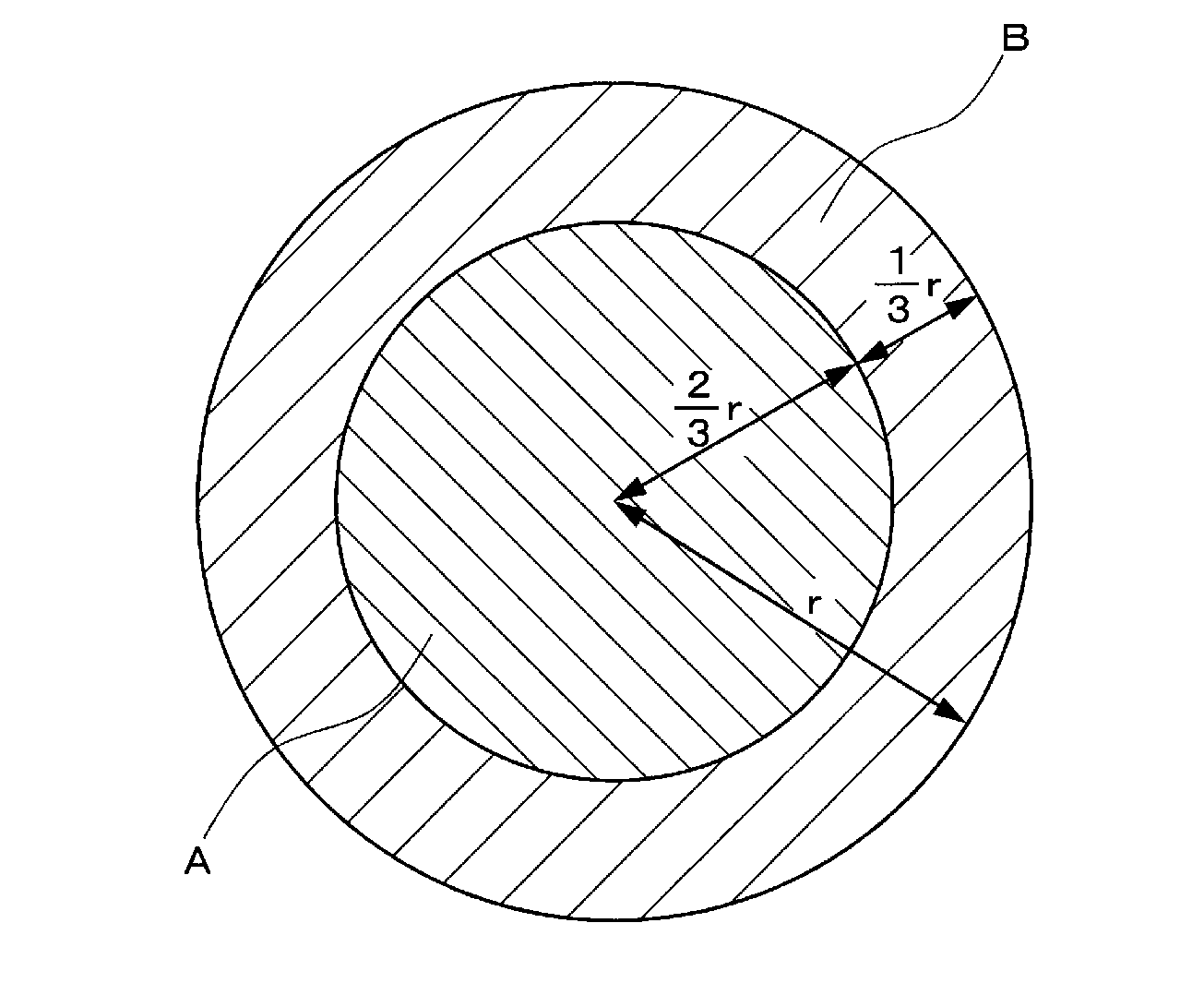Aluminum alloy conductor
a technology of alloy conductors and conductors, applied in the direction of conductors, metal/alloy conductors, single bars/rods/wires/strips, etc., can solve the problems of excessive force required in the wire harness, lack of durability and reliability, and high operation difficulty, so as to achieve good handling ability, not excessively high, and appropriate yield strength
- Summary
- Abstract
- Description
- Claims
- Application Information
AI Technical Summary
Benefits of technology
Problems solved by technology
Method used
Image
Examples
examples
[0057]The present invention will be described in more detail based on examples given below, but the invention is not meant to be limited by these.
examples 1 and 2
, Comparative Example 1, and Conventional Example 1
[0058]Fe, Mg, Si, Cu, and Al in amounts (mass %), as shown in Table 1, were made into the respective molten metals, followed by rolling, while continuously casting in a water-cooled casting mold, by using a Properzi-type continuous cast-rolling machine, to give respective rods with diameter about 10 mmφ. At that time, the cooling speed in casting was 1 to 20° C. / sec.
[0059]Then, scaling of the rod surface was carried out, to about 9.5 mmφ, followed by subjecting to wire-drawing to 2.6 mmφ, and a softening treatment at a temperature of 350 to 400° C. for 2 to 3 hours. The wire-drawing history and heat treatment to this stage are as follows.
9.5 mmφ→2.6 mmφ→Softening treatment
[0060]Further wire-drawing was carried out, followed by an intermediate heat-treatment under the conditions of 220 to 310° C. for 0.5 to 12 hours, and then wire-drawing at a working ratio of 10 to 30% (ones subjected to the wire-drawing at a working ratio of about ...
PUM
| Property | Measurement | Unit |
|---|---|---|
| grain size | aaaaa | aaaaa |
| temperature | aaaaa | aaaaa |
| resistivity | aaaaa | aaaaa |
Abstract
Description
Claims
Application Information
 Login to View More
Login to View More - R&D
- Intellectual Property
- Life Sciences
- Materials
- Tech Scout
- Unparalleled Data Quality
- Higher Quality Content
- 60% Fewer Hallucinations
Browse by: Latest US Patents, China's latest patents, Technical Efficacy Thesaurus, Application Domain, Technology Topic, Popular Technical Reports.
© 2025 PatSnap. All rights reserved.Legal|Privacy policy|Modern Slavery Act Transparency Statement|Sitemap|About US| Contact US: help@patsnap.com


